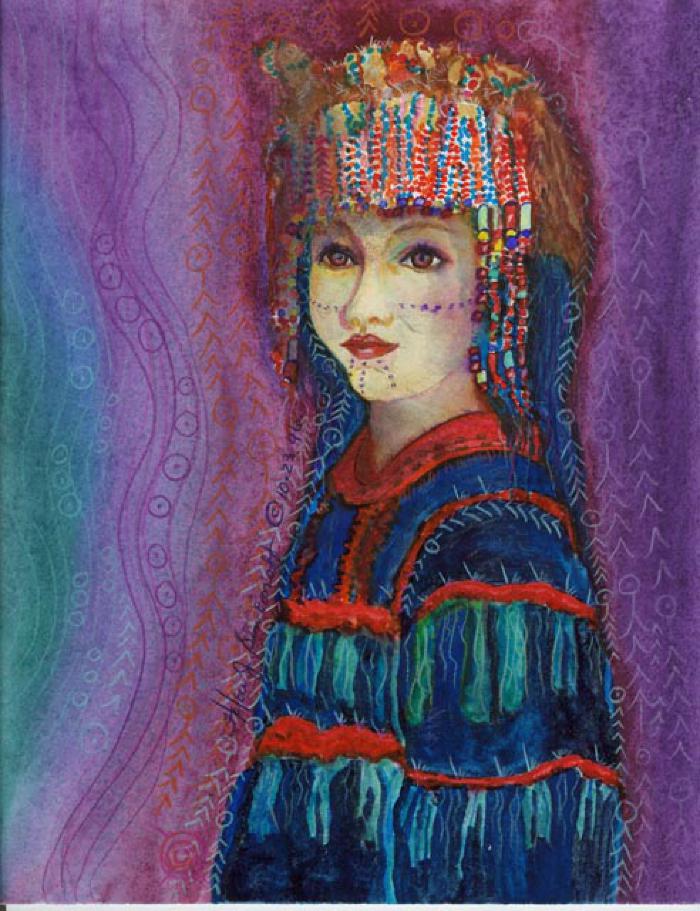Beaded Headress — Nacaq

Alaska Natives in communities from interior Alaska to the southeast coast once wore beaded headdresses. Among the Alutiiq people, headdresses were an important item of ceremonial regalia, worn at festivals for dancing, feasting, and visiting. Women’s headdresses were typically made from hundreds of glass beads strung on sinew and embellished with feathers colored with cranberry or blueberry juice. Strands of small beads were tied into a tight-fitting cap with many dangling lengths attached to the sides and the back. These attachments often featured larger, heavier beads that swayed, glittered and jingled as the wearer moved. In Prince William Sound, the daughters of Alutiiq chiefs wore headdresses of beads and dentalium shells that extended far down their bodies, sometimes reaching their heels. Such lavish garments were a symbol of wealth. Teenage girls and young women typically wore beaded headdresses, perhaps to symbolize their passage into adulthood.
Men also wore headdresses. These garments were hood-shaped, and although they might include beads, they lacked the long strings associated with women’s headdresses. Some were made of ermine skins decorated with feathers, pieces of animal hair, strips of leather, and gut and embellished with embroidery. These ornate decorations symbolized social prestige, but they also indicated respect for the spirit world.
